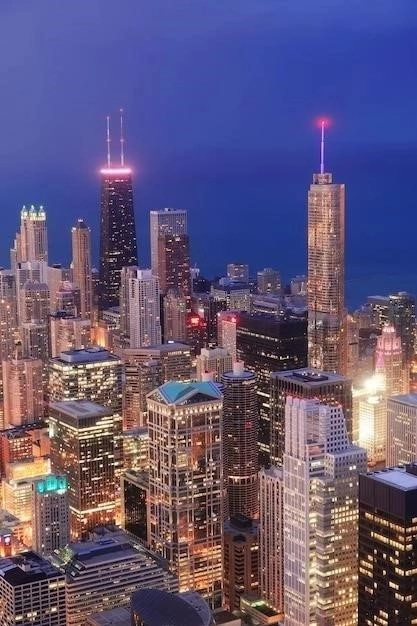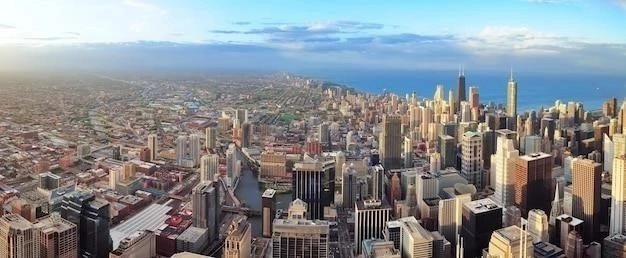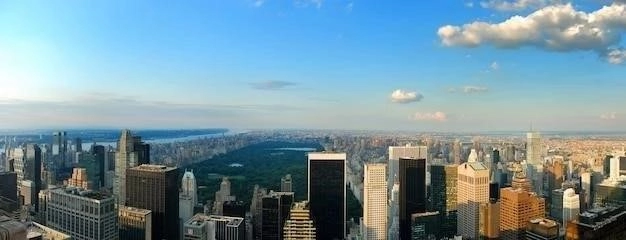Origins of the Phrase: John Winthrop and the Puritan Ideal
The phrase “city on a hill” originates from John Winthrop’s 1630 sermon, “A Model of Christian Charity,” delivered aboard the Arbella en route to the Massachusetts Bay Colony. Winthrop, a Puritan leader, envisioned the colony as a beacon of righteousness, a “city on a hill” that would inspire the world with its piety and prosperity. This ideal, rooted in Puritan beliefs of exceptionalism and covenant with God, profoundly shaped early American identity and laid the groundwork for future interpretations of the nation’s role in the world.

The “City on a Hill” in American Political Discourse
The “city on a hill” imagery, while originating in a specific religious context, has resonated throughout American history, evolving into a potent and enduring symbol in the nation’s political discourse. From the Founding Fathers to present-day leaders, the metaphor has been invoked to articulate American exceptionalism, its mission in the world, and its aspirations for a more perfect society.
The Founding Fathers, though influenced by Enlightenment ideals, also drew upon the “city on a hill” concept, envisioning a nation founded on principles of liberty and self-governance as a model for the world. This sense of purpose and moral leadership underpinned the American Revolution and shaped the nation’s early development. Over time, the “city on a hill” metaphor has been employed by various political factions and leaders to promote diverse and even conflicting agendas, reflecting the evolving national identity and its internal debates.
In the 20th century, presidents like John F. Kennedy and Ronald Reagan prominently utilized the “city on a hill” imagery. Kennedy emphasized the nation’s role as a defender of freedom and democracy during the Cold War, while Reagan, in his farewell address, invoked the image to highlight American exceptionalism and its enduring appeal as a beacon of hope for the world. The enduring presence of this metaphor in political rhetoric underscores its deep resonance within the American psyche and its capacity to galvanize support for national endeavors.
Ronald Reagan and the Reinvigoration of the Image
President Ronald Reagan played a pivotal role in revitalizing and popularizing the “city on a hill” image during his presidency in the 1980s. Drawing upon his own deeply held beliefs about American exceptionalism, Reagan skillfully wove the metaphor into his speeches and public addresses, effectively connecting it with his vision of a strong, prosperous, and morally upright America.
Reagan’s use of the “city on a hill” imagery resonated powerfully in the context of the Cold War. By framing the United States as a beacon of freedom and opportunity in contrast to the Soviet Union, Reagan galvanized national pride and bolstered support for his anti-communist policies. He often referred to America as a “shining city on a hill,” a place of hope and inspiration for those yearning for liberty and self-determination. This potent imagery served to solidify America’s moral high ground in the global struggle against communism.
Reagan’s adept use of the “city on a hill” transcended partisan divides, tapping into a deep wellspring of American optimism and belief in the nation’s unique destiny. His eloquence and conviction breathed new life into the metaphor, solidifying its place as a cornerstone of American political rhetoric and national identity. His presidency marked a period of renewed emphasis on American exceptionalism, with the “city on a hill” serving as a potent symbol of the nation’s aspirations and its role as a global leader.
American Exceptionalism and Its Critics
The notion of the United States as a “city on a hill,” inherently intertwined with the concept of American exceptionalism, has fueled fervent debates throughout the nation’s history. Proponents, often citing the nation’s founding ideals, its commitment to liberty, and its global leadership, view American exceptionalism as a source of national pride and a driving force for positive change in the world.
However, the concept has also drawn sharp criticism. Detractors argue that American exceptionalism fosters a dangerous sense of national superiority, blinds the nation to its own flaws, and justifies interventionist foreign policies. Critics point to historical instances where the pursuit of American exceptionalism has led to military interventions, support for oppressive regimes, and a disregard for international norms. They argue that a more humble and self-critical approach to foreign policy would be more ethical and effective.
The debate over American exceptionalism and the “city on a hill” metaphor remains highly charged, reflecting deep divisions within American society about the nation’s identity, its values, and its role in the world. As the United States navigates an increasingly complex global landscape, grappling with its own internal challenges while confronting global issues, the debate over its exceptionalist identity and the implications of the “city on a hill” metaphor will undoubtedly persist.
The “City on a Hill” as a Beacon of Hope and Inspiration
Despite ongoing debates surrounding American exceptionalism, the “city on a hill” ideal retains a potent symbolic power, representing a source of hope and inspiration for many both within the United States and abroad. The image evokes a sense of promise, a vision of a nation striving to embody principles of liberty, justice, and opportunity for all. This aspirational quality has resonated deeply with generations of immigrants who have sought refuge and a better life within its borders.
The “city on a hill” metaphor also serves as a powerful reminder of America’s potential for positive global leadership. Its historical commitment to democratic values, human rights, and innovation has inspired movements for social and political change worldwide. The image evokes a sense of possibility, suggesting that a nation founded on ideals can indeed serve as a force for good in the world.
However, the “city on a hill” metaphor serves as a reminder of the constant need for self-reflection and a commitment to living up to its ideals. Acknowledging its shortcomings and striving for a more just and equitable society are essential for the United States to truly embody the hope and inspiration represented by this enduring image.

The United States’ Role in Global Affairs
The “city on a hill” metaphor has profoundly influenced the United States’ approach to global affairs throughout its history. From its inception, the nation has often viewed itself as having a unique mission to champion liberty, democracy, and human rights around the world. This self-perceived exceptionalism has manifested in various ways, from promoting democratic ideals to intervening in foreign conflicts.
Advocates for a more assertive U.S. role in global affairs often invoke the “city on a hill” imagery to justify military interventions, development aid, and diplomatic efforts aimed at promoting democracy and freedom. They argue that the United States has a moral obligation to use its power and influence to advance these values globally.
However, critics contend that a foreign policy driven by an overly zealous belief in American exceptionalism can lead to overreach, unintended consequences, and even undermine the very values it seeks to promote. They advocate for a more restrained and multilateral approach, emphasizing diplomacy, cooperation, and respect for national sovereignty.

Domestic Challenges to the “Shining City” Image
While the “city on a hill” metaphor encapsulates a powerful aspiration, the United States has grappled with persistent domestic challenges that directly impact its ability to live up to this idealized image. Issues such as racial injustice, economic inequality, political polarization, and social unrest have at times tarnished the “shining city” ideal, raising questions about the nation’s ability to serve as a beacon for others when it faces significant internal divisions.
Systemic racism, rooted in the legacy of slavery and segregation, continues to cast a long shadow, undermining social cohesion and fueling tensions within American society. Economic disparities, fueled by globalization and technological advancements, have widened the gap between the wealthy and the rest, eroding the promise of equal opportunity that lies at the heart of the American Dream. Political polarization, exacerbated by partisan media and a deeply divided electorate, hinders constructive dialogue and impedes the nation’s ability to address pressing challenges effectively.
Addressing these domestic challenges is crucial not only for the well-being of its citizens but also for the credibility of the “shining city” ideal. As long as these issues persist, they will continue to complicate the United States’ ability to project its values and influence on the global stage.

Immigration and the “Melting Pot” Ideal
The United States, often hailed as a “nation of immigrants,” has long grappled with the complexities of incorporating newcomers into its social fabric. The “melting pot” ideal, frequently invoked to describe the assimilation of immigrants into a cohesive American identity, has been both celebrated as a source of the nation’s dynamism and criticized for its potential to erase cultural diversity.
Advocates of the “melting pot” metaphor emphasize the importance of shared values, a common language, and a unified national identity. They argue that assimilation is essential for social cohesion and national unity, enabling immigrants to fully participate in American society and contribute to its continued progress.
However, critics of the “melting pot” concept argue that it can lead to cultural homogenization, pressuring immigrants to abandon their heritage and conform to a dominant culture. They advocate for a more inclusive model, often described as a “mosaic” or “tapestry,” where diverse cultures coexist and enrich the national identity without sacrificing their unique traditions and perspectives.

Economic Inequality and Social Mobility
The “city on a hill” metaphor, with its emphasis on opportunity and prosperity for all, is challenged by the stark realities of economic inequality and limited social mobility in the United States. While the nation boasts a high GDP and technological innovation, the gap between the wealthy and the rest has widened significantly in recent decades, raising concerns about fairness, social cohesion, and the attainability of the American Dream.
Factors contributing to this growing inequality include globalization, technological advancements that have displaced certain sectors of the workforce, declining unionization, and tax policies that often favor the affluent. This trend has eroded the middle class, limited opportunities for upward mobility, and created a sense of economic insecurity for many Americans.
Addressing economic inequality is crucial for upholding the promise of the “city on a hill.” Policies aimed at promoting economic justice, such as investing in education and job training, strengthening social safety nets, and addressing regressive tax structures, are essential to create a more equitable society and ensure that the “shining city” remains accessible to all citizens.

The Future of the “City on a Hill”: Challenges and Opportunities
As the United States navigates the complexities of the 21st century, the “city on a hill” metaphor continues to shape its national identity and global role. However, the nation faces a confluence of challenges that will test its ability to live up to this enduring ideal. Globalization, technological advancements, climate change, geopolitical shifts, and internal divisions pose significant hurdles, demanding innovative solutions and a renewed commitment to its founding principles.
Maintaining its economic competitiveness while addressing income inequality and ensuring social mobility for all citizens will be crucial. Finding a balance between its global leadership role and a need for greater cooperation and understanding in an increasingly interconnected world will require nuanced diplomacy and a willingness to reconsider traditional approaches. Addressing climate change effectively demands not only domestic action but also global leadership and collaboration.
Despite these challenges, the “city on a hill” ideal retains its power to inspire. The United States, with its history of innovation, resilience, and commitment to democratic values, possesses the capacity to overcome these obstacles and chart a path toward a more just, equitable, and sustainable future. Whether it can truly live up to the promise of a “shining city on a hill” in the 21st century remains to be seen, but the aspiration itself continues to shape the national dialogue and guide its actions on the world stage.

Conclusion: The Enduring Legacy of the “Shining City on a Hill”
The “shining city on a hill” metaphor, deeply ingrained in the American psyche, continues to exert a profound influence on the nation’s self-perception and its role in the world. From its Puritan origins to its contemporary interpretations, the imagery has served as both an aspiration and a source of contention, reflecting the complexities and contradictions inherent in the American experiment.
While the United States has undoubtedly made significant strides toward achieving its founding ideals, it continues to grapple with the gap between rhetoric and reality. Systemic injustices, economic disparities, and political polarization pose ongoing challenges to the “shining city” vision. Nonetheless, the enduring power of this metaphor lies in its ability to inspire hope, fuel self-critique, and propel the nation toward a more just and equitable future.
As the United States navigates an increasingly complex and interconnected world, the “shining city on a hill” will undoubtedly continue to serve as a touchstone for national reflection and debate. Whether it can truly fulfill its promise of serving as a beacon of hope and inspiration for all remains an open question, contingent upon its willingness to confront its shortcomings, uphold its values, and adapt to the challenges of the 21st century.










